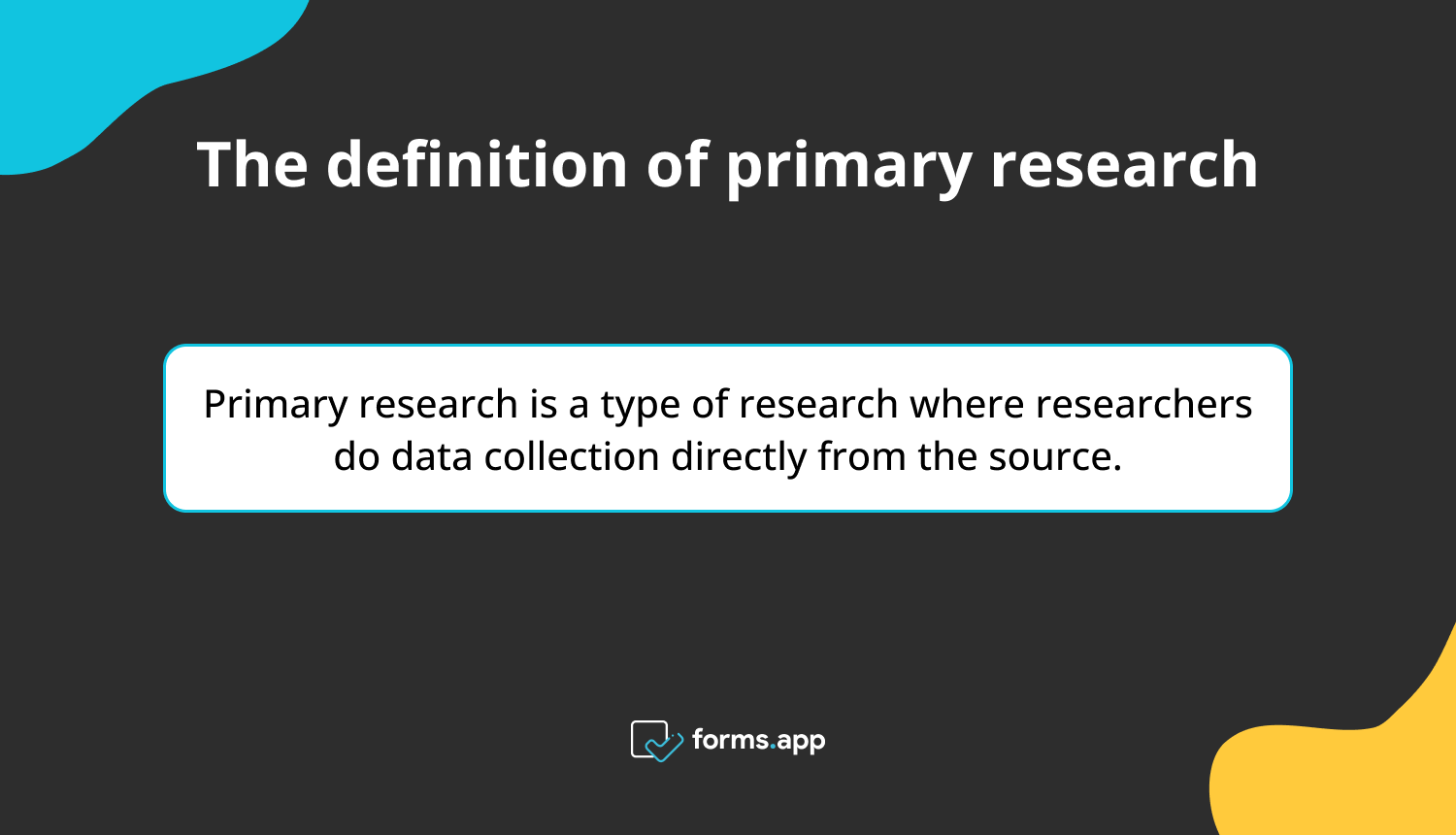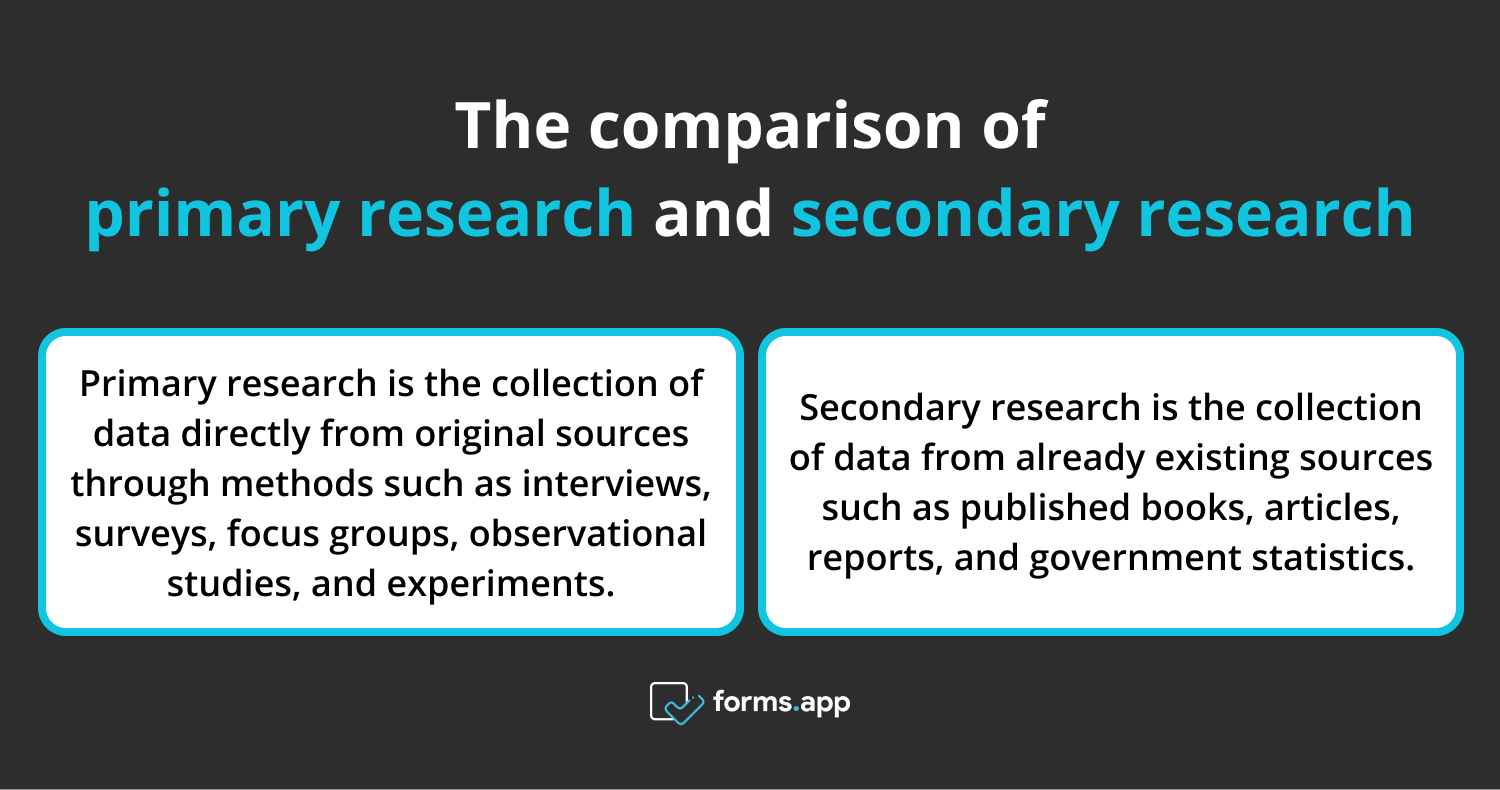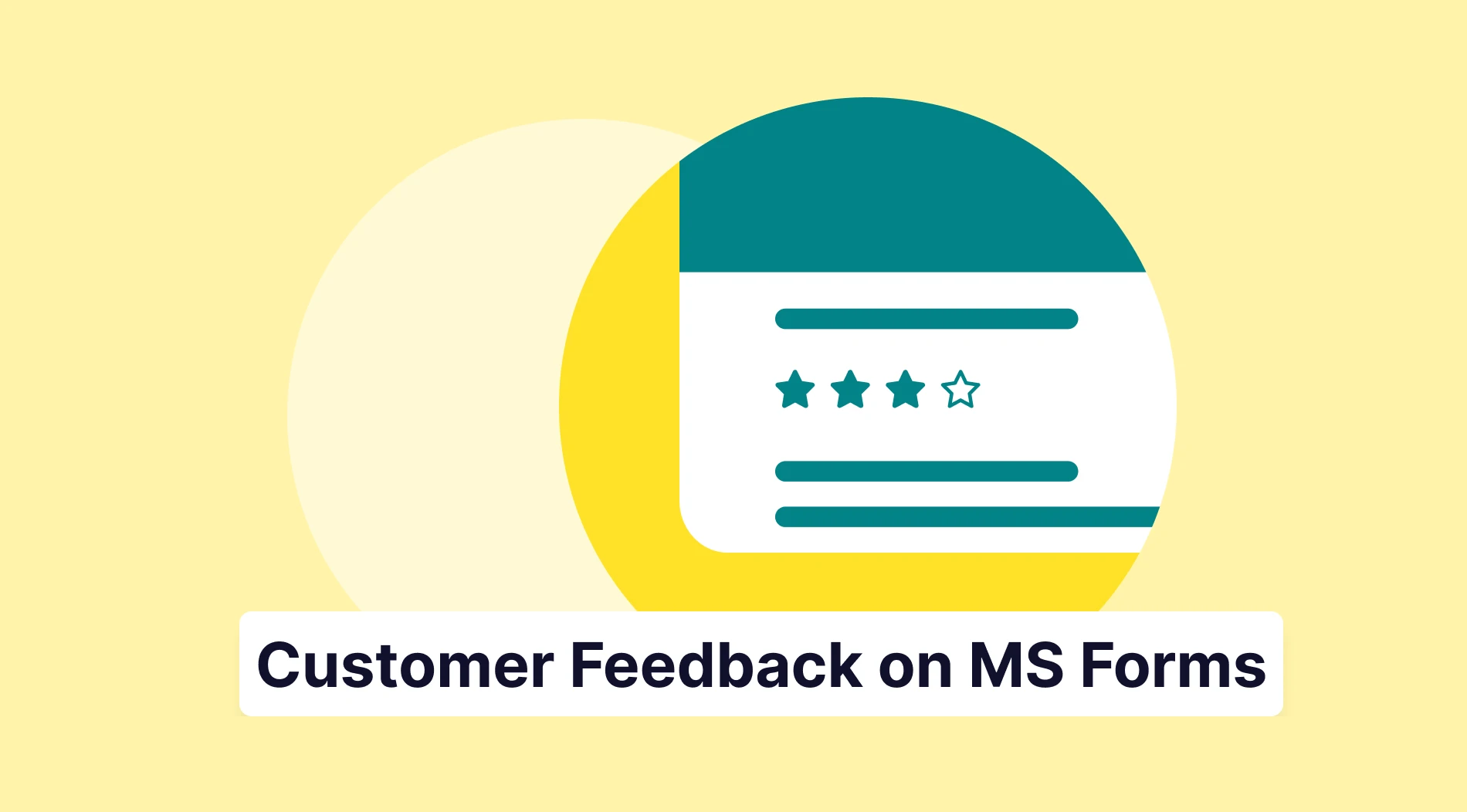When an individual, company, or institution wants to gather information on one or multiple topics, one of the best ways is to conduct research. The party that wants to collect data or do market research can hire someone to do the research and hand them the information. Or, they can look up research that’s already been done. Additionally, If they want to do the research themselves, there are different types of research as well.
For example, they can survey focus groups with an online survey or do face-to-face interviews with the target audience. They can conduct research with small groups or large numbers of participants. Let us see the different kinds of primary research types and what the difference is between primary vs secondary research with some examples!
What is primary research?
Primary research is a type of research where researchers do data collection directly. But what does that mean? That means that this type of research involves obtaining the data directly from the source. Additionally, the data should not be published as books, articles, and reports before. So, you need to find a unique subject that has not been studied before and start your research.
The data can be collected using different methods, including surveys, interviews, focus groups, observational studies, and experiments. The choice of methods mostly depends on the information needed and resources/budgets. Now, let us see different types of primary research.

The definition of primary research
Types of primary research
There are various types of primary research, and they all bring different things to the table. Even though they all help one to collect information, some may be time-consuming, and some can be a little more cost-effective. It mostly depends on the resources you have and the type of data you want to collect.
1 - Interviews:
Interviews are dialogues between a researcher and a respondent. The researcher asks open-ended questions, and respondents can answer them freely. They can be done on the phone or face-to-face. It is usually a successful method, but it is time-consuming, and the quality depends on the researcher’s ability to ask questions.
2 - Surveys:
Surveys offer a convenient and cost-effective solution for primary market research. They are pre-made questions that are offered to a group of audience. This type of method allows for reaching a wider audience simultaneously and without much trouble. The length of the survey and the questions should be thought carefully to avoid boring the respondents. It is also helpful to use a free survey maker such as forms.app to help you out!
3 - Focus groups:
Using focus groups means gathering a small group of people about a certain topic. That group usually consists of 6-10 people. The focus groups are presented with a topic, product, or concept, and they present their honest opinions. Focus groups are a good way to obtain data as the responses are immediate. This method is commonly used by businesses to gain insight into their customers.
4 - Observation:
In this method, there is no interaction between the researcher and the respondent. It relies on mere observation, as stated in the name. The researcher either observes them directly or uses cameras to capture their reactions to certain products. And then they gather data from these undirected moments. It eliminates any potential bias as it allows people to be in their natural environment.
Primary research vs. secondary research
Primary research and secondary research are two types of research methods used to gather information and data. Basically, primary research is the collection of data directly from original sources through methods such as interviews, surveys, focus groups, observational studies, and experiments. As it involves doing the research, it may be costly and time-consuming.
Secondary research, on the other hand, involves the collection of data from already existing sources such as published books, articles, reports, government, and social media statistics. The goal of secondary research is to gather information quickly and efficiently without having to conduct primary research.

The comparison of primary research and secondary research
Primary research is considered more reliable and accurate than secondary research because it provides first-hand information directly from the source. Secondary research, however, is quicker, less expensive, and requires fewer resources but may not provide as much depth or accuracy as primary research.
Primary research examples
When you want to gather inside on some topic and decide on doing primary research yourself, you should be able to answer some questions. For instance, decide on the topic you want to learn about. Then, try to see what are your resources and budget for this topic. You can be more precise about the type of method you want to use by deciding your resources. Let us go through some examples on primary research methods.
Focus group examples:
If you plan on launching a new advertisement for your company or planning on a different approach in marketing, you can use focus groups to test its efficiency. That allows you to test on a small group instead of wasting big budgets on something that may fail or not.
Observation examples:
As a bakery shop owner, you can have people test your newest product by offering them a free sample. That will allow you to “observe” their immediate reaction. This would also be a positive
interaction between customers and the company.
Interview examples:
If you are doing research on a health or medication-related subject, the best way is to do it through interviews. You can have your questions ready beforehand and ask them to the respondents. Interviews can be done in-person interviews or through telephone. In-person interviews allow you to read body language, and phone interviews allow a more relaxed environment for respondents who may feel anxious.
Survey examples:
If you operate a restaurant, an office, or a place where people come and go, you can survey them by asking about different aspects of the environment or ask them to give their feedback using a face-to-face or an online survey. Also, it goes without saying that using an online survey tool to create a free and effective online survey can help you even more!
Conclusion
When one wants to collect information on some subject, it is possible to use different methods. For example, they can use primary sources to collect data from their target market first-hand. Or they can gather data that has been published by other researchers.
Different methods provide researchers with different advantages. For instance, primary research methods offer precise and immediate results. And secondary research is cost-effective and does not take as much time. If you want to collect data from a large audience without much fuss and pay, the best method is using an online survey. And using a survey maker, such as forms.app can help you big time. It is a free and effective survey tool with many features and ready-to-go templates. Check it out and collect valuable information today!
Defne is a content writer at forms.app. She is also a translator specializing in literary translation. Defne loves reading, writing, and translating professionally and as a hobby. Her expertise lies in survey research, research methodologies, content writing, and translation.


